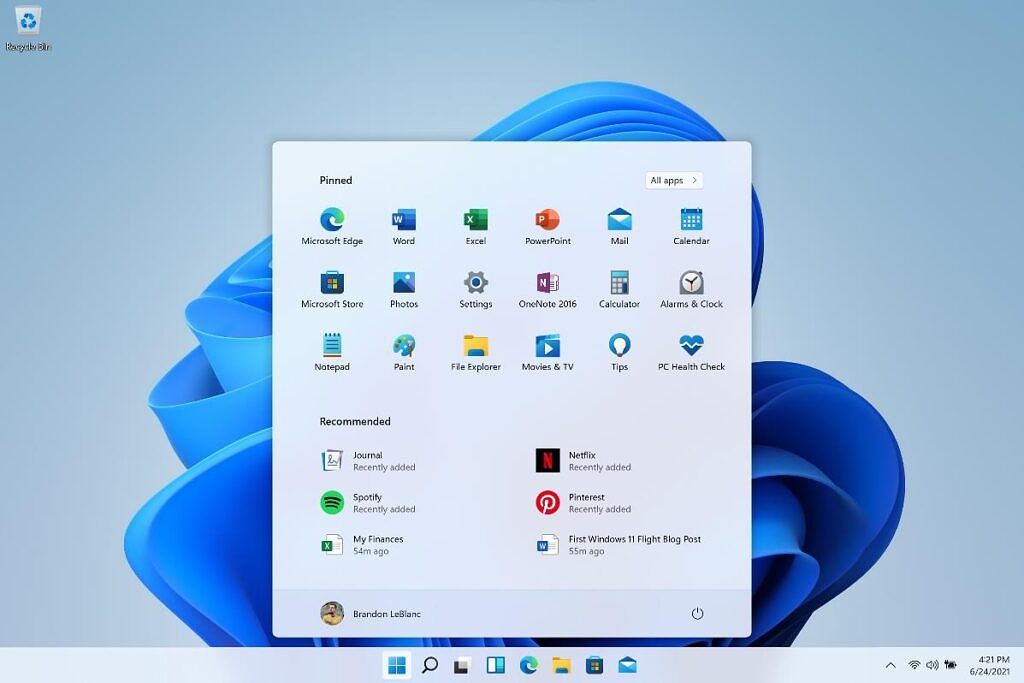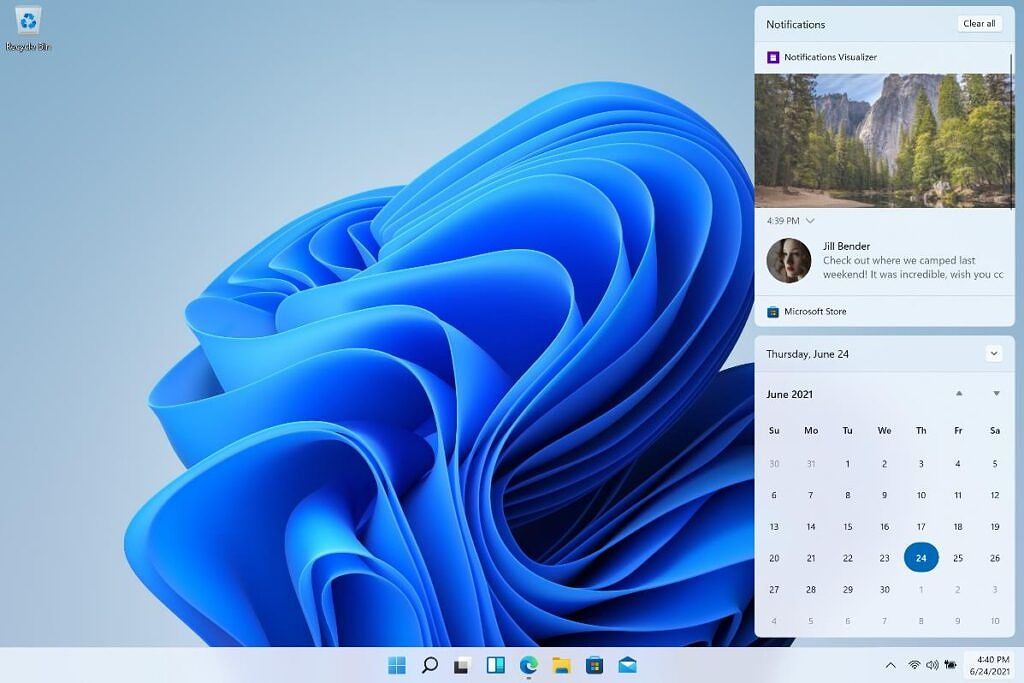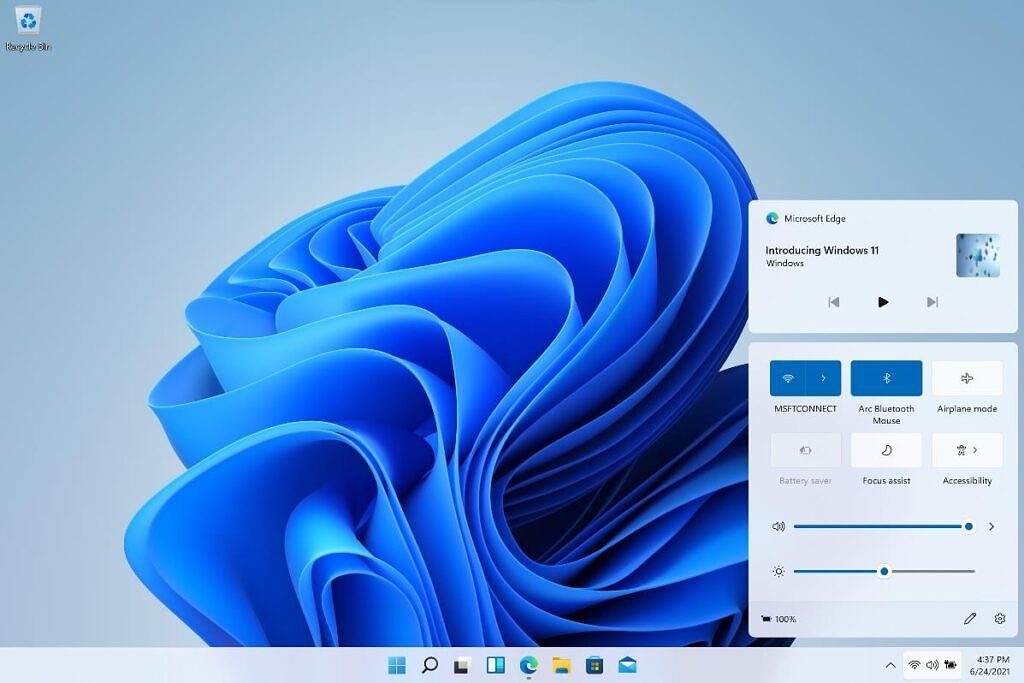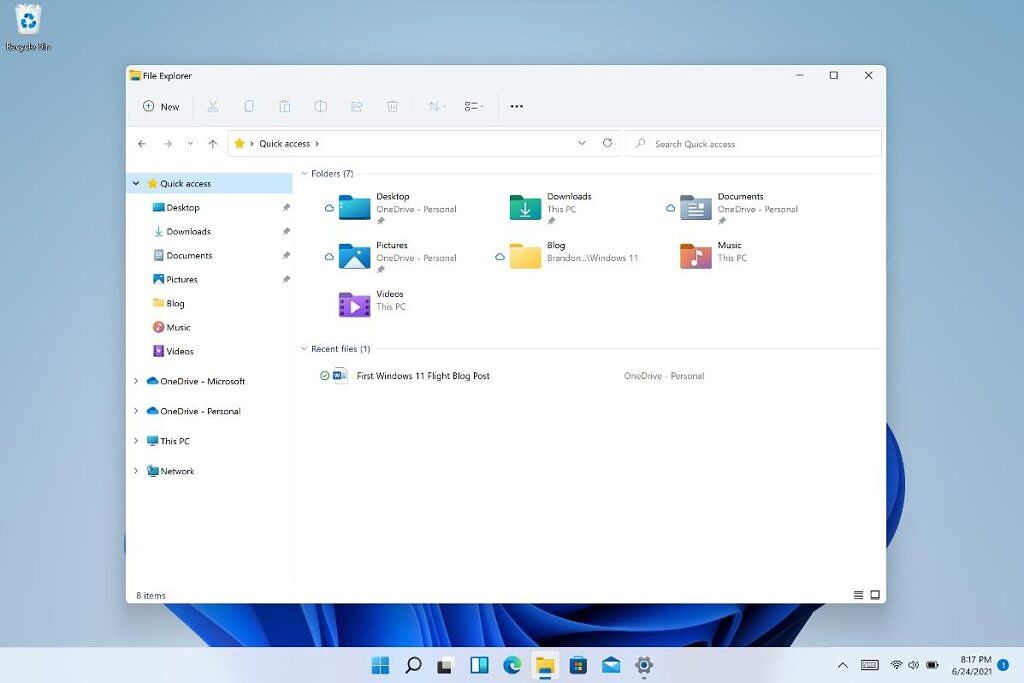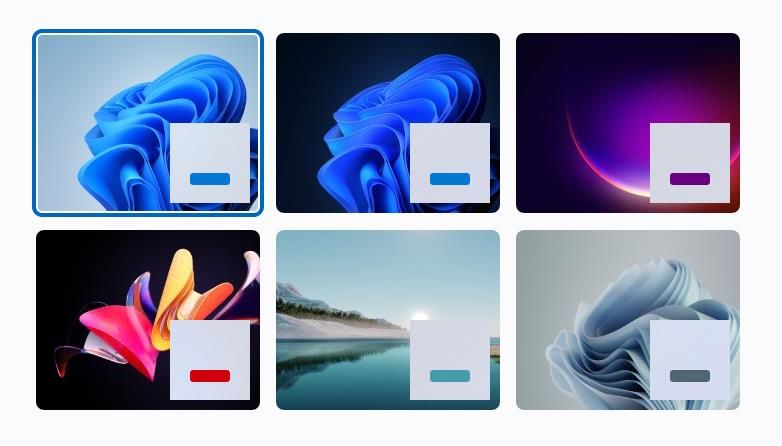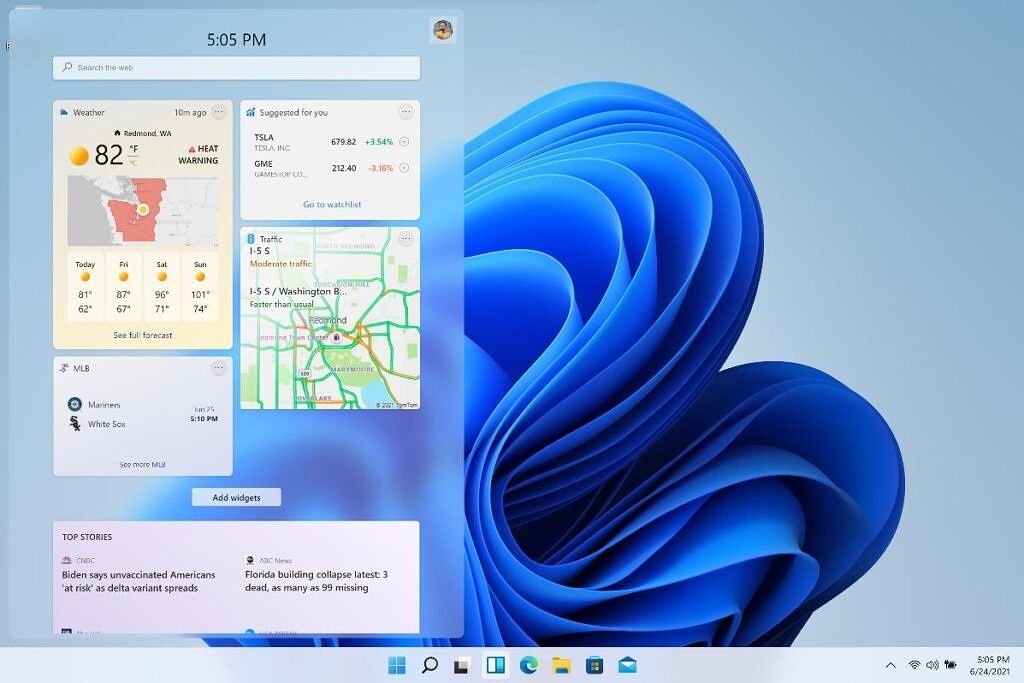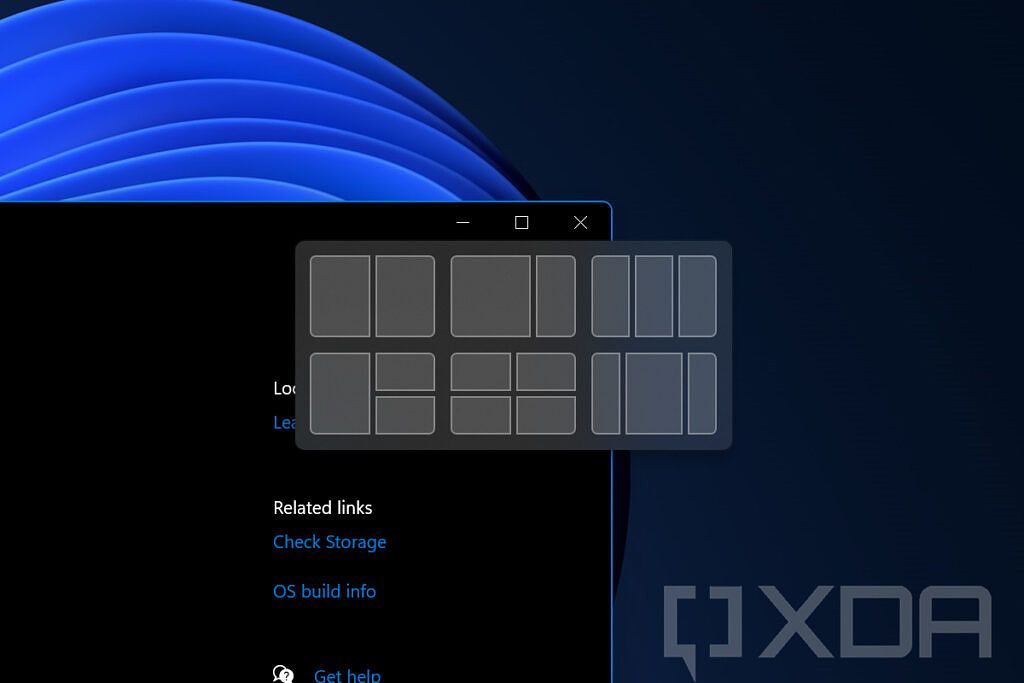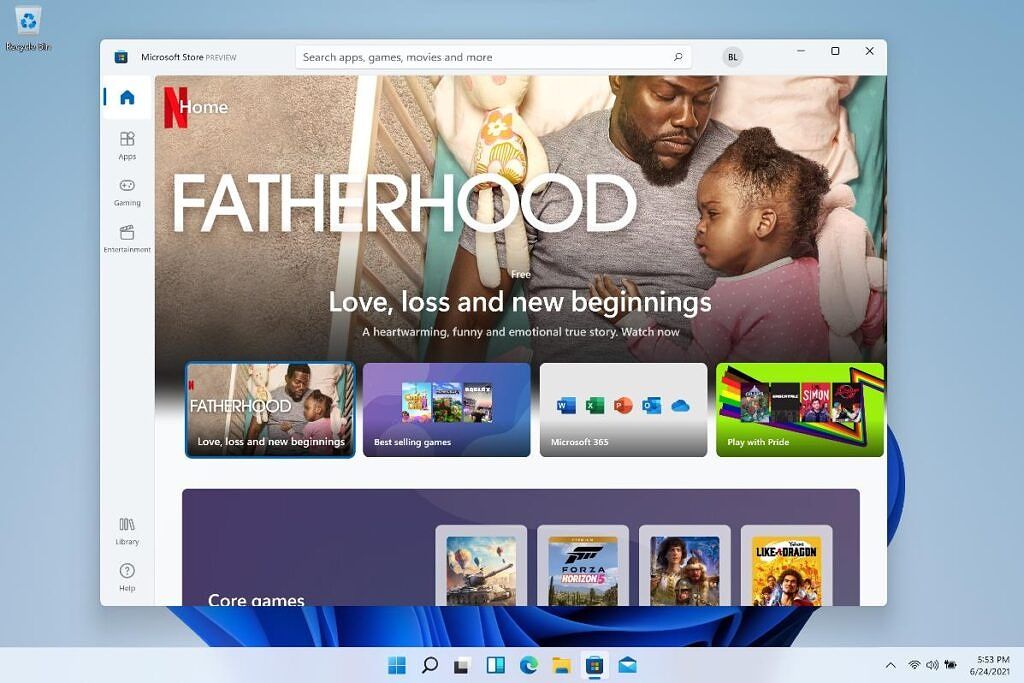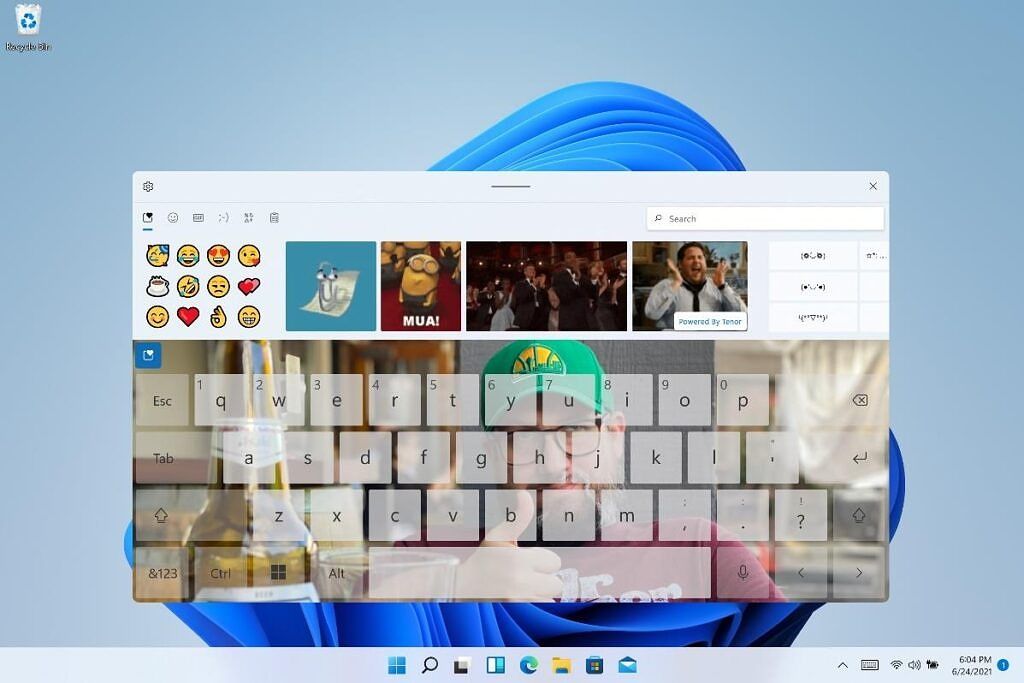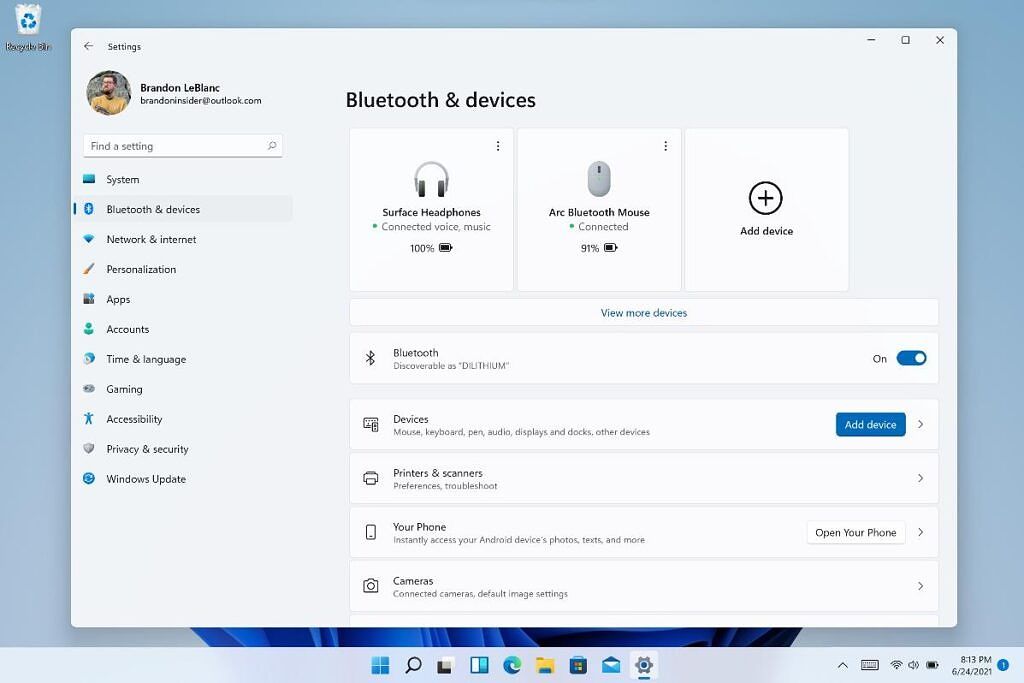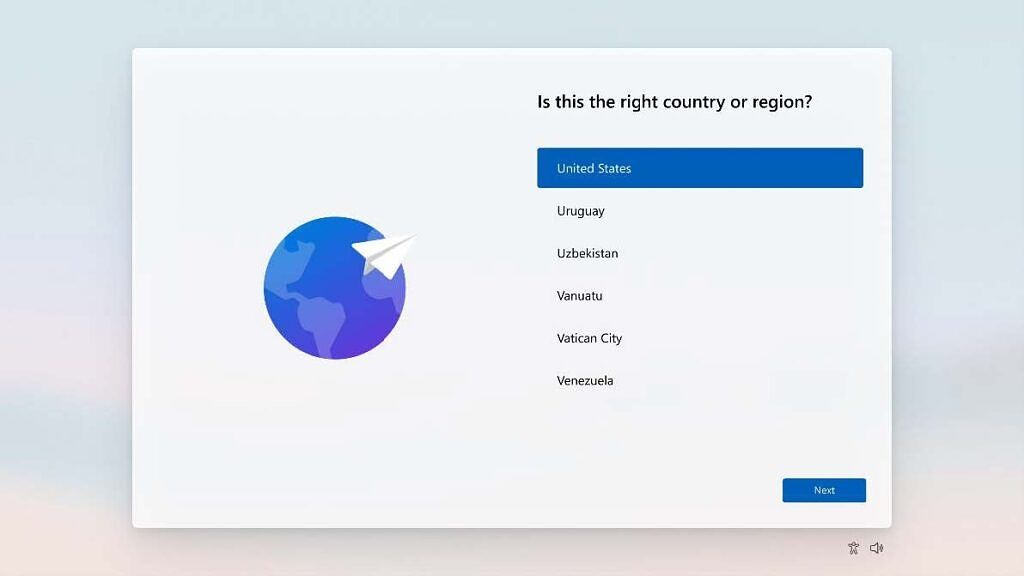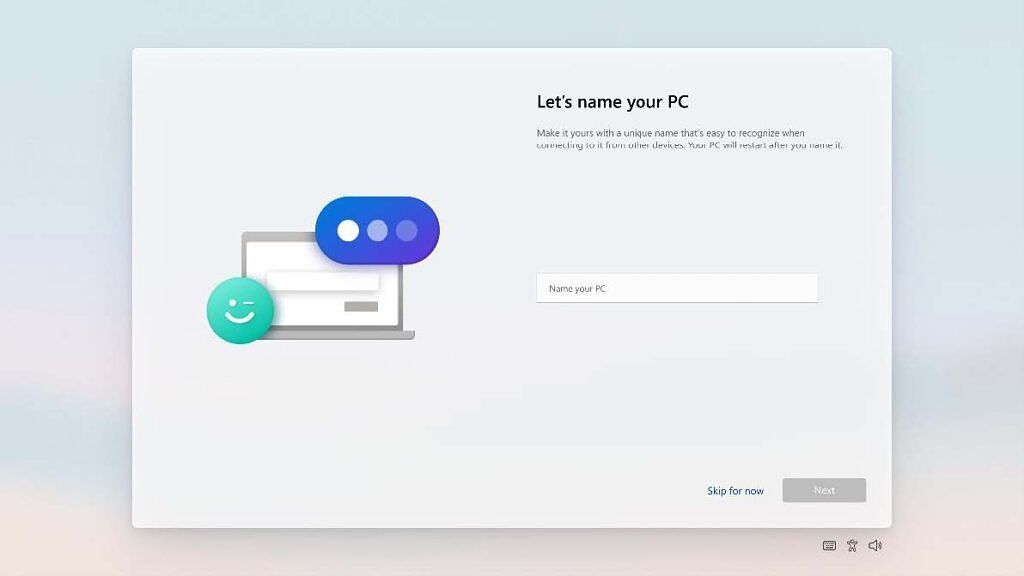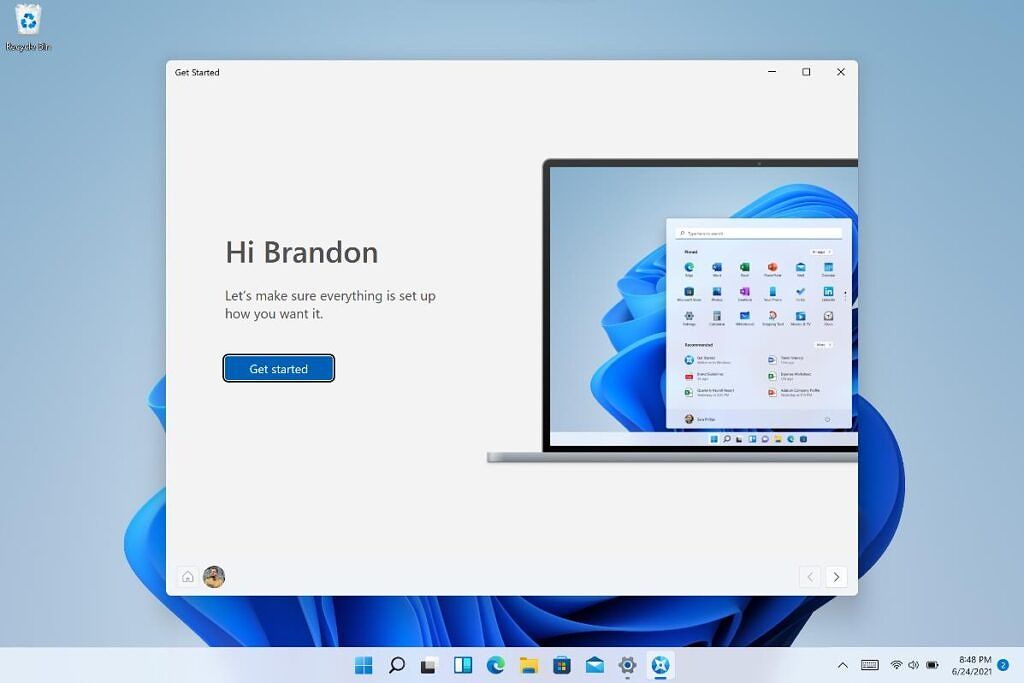Last week, Microsoft introduced Windows 11, the first major new version of its in-house OS in six years. The Redmond firm said that the first Windows 11 Insider Preview would arrive this week with a ton of new features, and it's not wasting any time. The first Windows 11 beta is here in the form of build 22000.51, and it's available for Insiders in the Dev channel.
There's a lot that's new in this build, and it's actually a lot more than was in the leaked build that we saw previously. It's important to remember that there are a few things that aren't here yet. For example, there's no Android app support yet, and Teams integration isn't here yet. Microsoft also noted in its blog post that that there are some inbox app updates on the way.
As for what is new, there's a ton. Here's the list:
Windows 11 design changes
Rounded corners
The very first thing on Microsoft's list of Windows 11 features is better visuals, and that adds up to rounded corners. It might seem like a simple thing, but Windows over the past decade has had a lot of sharp corners. Frankly, it didn't make for a visually pleasant experience.
Start Menu and taskbar
And of course, there's a new Start Menu. This is probably the most obvious change in the whole OS. In fact, this is the first time that the Start Menu hasn't been attached to the bottom-left corner of the screen (Windows 8 was, kind of) since it was introduced with Windows 95. All of the elements on the lock screen are centered too, and if you're using something that has an accelerometer, it even has a parallax motion effect.
Everything is centered now, including both the taskbar and the Start Menu. It's not just the location that's changed though. Live Tiles are gone, and it's a simple set of pinned icons now. Below that are recommended apps and documents, and they consist of things that you've recently used or installed.
Notification center and Quick Settings
Clicking on the date and time in the taskbar brings up the notification center. It's going to give you your calendar and notification in an all-new multi-panel design.
Probably a bigger change are that there are just two buttons on the right side of the taskbar now. One of them is the one that opens the notification center. The other launches Quick Settings. The network, volume, and battery icons all launch Quick Settings, rather than popping up their own little settings menu like they do in Windows 10.
Naturally, you'll find controls for all of those things in Quick Settings, along with media controls. You can edit them by clicking the little pencil in the bottom-right, similar to Android devices.
File Explorer
You may have heard that there's a new File Explorer. The ribbon is being swapped out for a command bar for a cleaner look.
The rest of it should be pretty familiar if you've been running the latest Windows 10 Insider Previews. The new icons have been in testing for a while. There are simpler context menus here as well, and while all of this is meant to be cleaner and easier, you can expand to show more options.
Windows 11 themes
The Windows 11 preview build comes with six built-in themes. This is something that we already saw with the previous build that we went hands-on with.
The first two are the default themes, which come in light and dark flavors. There are also new contrast themes that can be found by going to Settings -> Accessibility -> Contrast themes.
New sounds
The Windows 11 preview has new sounds, and Microsoft says the sound scheme is "lighter, more atmospheric, and a bit shorter overall". Generally, they're just meant to be more pleasant than the sounds in Windows 10. Try changing the volume and hearing the chime. Interestingly, Microsoft also said there are different sounds for light and dark modes.
Widgets
At first glance, the widgets in Windows 11 seemed like a prettier and rebranded version of News and interests from Windows 10, rather than a new feature. News and interests is gone, and widgets in Windows 11 are a much improved version of that.
You can add or remove widgets, and you can rearrange them. First-party widgets include calendar, weather, traffic, Microsoft To Do, photos from OneDrive, sports, stocks, and tips. One thing that Microsoft didn't confirm is third-party widget support.
You can access widgets from the icon in the taskbar, by swiping in from the left, or by pressing Win + W.
Multitasking features in Windows 11
Snap improvements
Ever since Windows 7 was introduced, Microsoft has been working hard at giving users better ways of using split-screen apps. With Windows 10, it introduced Snap Assist, which let you snap one window to the side, and that the OS would show you your open apps so you could pick one for the other side.
Windows 11 introduces Snap Layouts, which is available in today's preview. As you can see from the image above, there are a variety of layouts that you can choose from. All you have to do is pick one, and which ever position you click on, that's where your app will end up. You can bring this up by hovering over the maximize button. Snap Assist will help you populate the rest of the screen.
On top of Snap Layouts, we have Snap Groups. Here's an example. If you work with two Edge windows side-by-side, then you're used to hovering over the Edge icon in the taskbar and picking the one you want to open. To bring up your full view, you'd hover over the icon again and pull up the other window as well.
You won't have to do that with Snap Groups. Now, you'll be able to hover over the Edge icon and pick one of the two windows, or both. This also works if you have different apps snapped.
Docking behavior changes
When you undock your laptop, any windows on your external monitor will be minimized, rather than cramming all of your open windows onto your tiny laptop monitor. When you dock your PC again, Windows 11 will set your windows right where they were before.
The new Microsoft Store, but without the Windows 11 features you want
The new Microsoft Store is here, and it has a refined design. That's about it. It will be worth checking out, but it's missing the stuff you really want. As mentioned earlier, there's no Android app support, or the integrated Amazon Appstore that's coming to the Microsoft Store. The bigger changes are mostly back-end anyway, such as supporting apps that haven't been packaged for the Store, opening up to third-party commerce systems, supporting PWAs, and so on.
New input features in Windows 11
Touch Keyboard improvements
Similar to what we've seen with SwiftKey on Android and iOS, you can set themes for the Touch Keyboard. There are 13 built-in themes, and you can make your own (the image of Senior PM of the Windows Insider Program Brandon LeBlanc, sadly, is not included).
Voice typing improvements
There's a new voice typing launcher feature in Windows 11. You can turn this on in settings, as it's not on by default. Whenever a textbox is in focus, you'll see a little box at the bottom of a screen that you can tap to start voice typing.
Touch gestures
Touch gestures is one of those Windows 11 features that we've been waiting for, because Windows 10 isn't super great on tablets. Basically, you can use the same three- and four-finger gestures that you're already familiar with on Precision touchpads.
Here are some examples:
- Three fingers swiping left or right goes to the last used app.
- Three fingers swiping down brings you to the desktop.
- Three fingers swiping up opens Task View.
- Four fingers swiping left or right switches between desktops.
The all-new Pen menu
Remember the Windows Ink Workspace in Windows 10? That's gone now in favor of the new Pen menu. There's still a pen icon in the taskbar; it just opens the Pen menu now. The menu can be customized by clicking the gear icon (unlike Quick Settings, which can be edited by clicking a pencil and specifically not the gear icon).
New display features in Windows 11
Microsoft touted display improvements it's already promising, like Auto HDR, content adaptive brightness control, HDR support in color-managed apps, and HDR certification. It's adding Dynamic Refresh Rate, which changes your refresh rate based on what you're doing.
This should save your battery life a bit. Windows 11 will be able to turn up your refresh rate if you're scrolling or doing something else that requires motion, and turn it down at other times. You can turn it on by going to Settings -> System -> Display -> Advanced display -> Choose a refresh rate -> Dynamic.
The new Settings app
There's a completely overhauled Settings app in Windows 11. It's meant to be both prettier and easier to use. There are new icons, new typography, and it's more colorful. There's a navigation panel on the left side that persists between pages, and should make it easier for you to move around without losing your place.
Once you get beyond the main navigation, pages have controls that can expand and collapse. This method is meant to make long Settings pages more manageable.
At the top of the page are what Microsoft calls hero controls. This shows you important information, and settings that are commonly accessed.
The new out-of-box experience
There's an all new setup experience in Windows 11, and most importantly, Cortana isn't in it. Unlike with Windows 10, you won't get Cortana yelling at you when you set up a new Windows 11 PC.
As you can see, the whole thing has received a visual overhaul. It's prettier and more pleasant to use.
Microsoft is also adding the ability to name your PC. This screen hasn't been seen since the Windows 8 era, and it's going to be really useful for people who activate a lot of PCs.
Finally, there's a new Get Started app, which will open after you set up your Windows 11 PC for the first time.
Wi-Fi 6E
Windows 11 is getting Wi-Fi 6E support, which is the beginning and end of that story. After all, you not only need a computer that supports it, but you also need a router that supports it.
Getting started with the new features on Windows 11
To get started with Windows 11, you need to enroll your PC in the Windows Insider Program. You can follow our guide to get started here. It's important to remember a few things. Perhaps most importantly, the Windows 11 requirements are different from the Windows Insider Program requirements, so make sure your PC will run Windows 11 before installing it. Also, remember that there can be lots of issues with Insider Preview builds.
If you're interested, there's also a new Office Insider Preview build out today. It's meant to be redesigned for Windows 11. To get started, find your Insider settings in one of the Office apps under account settings.


